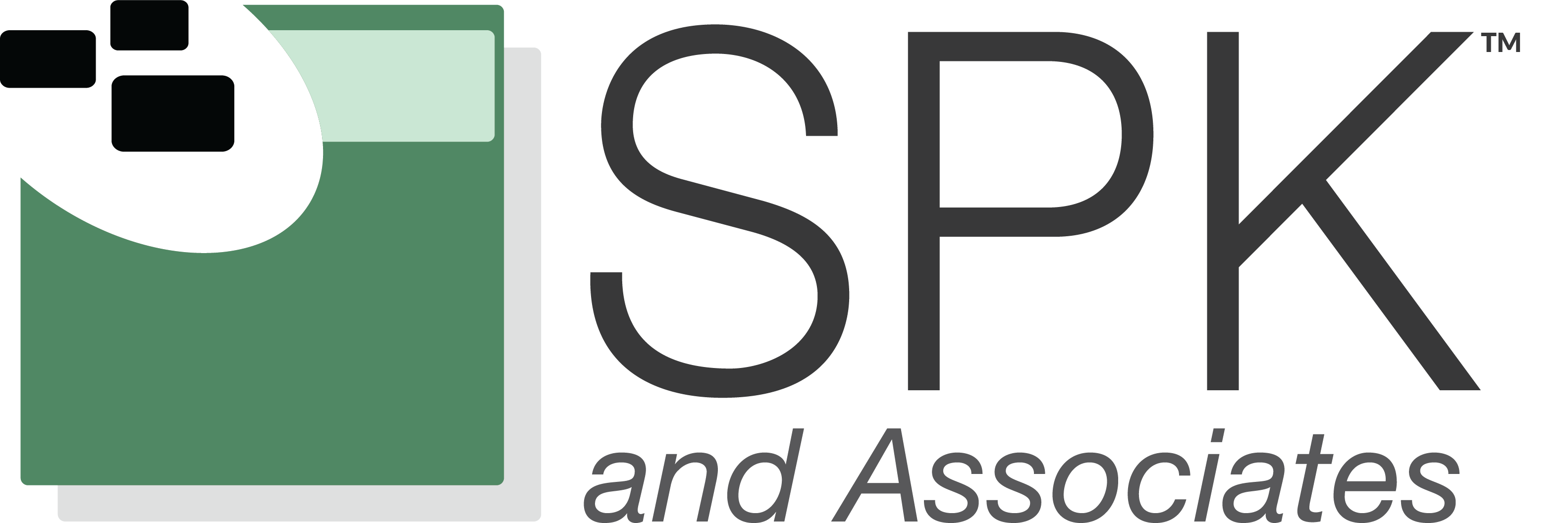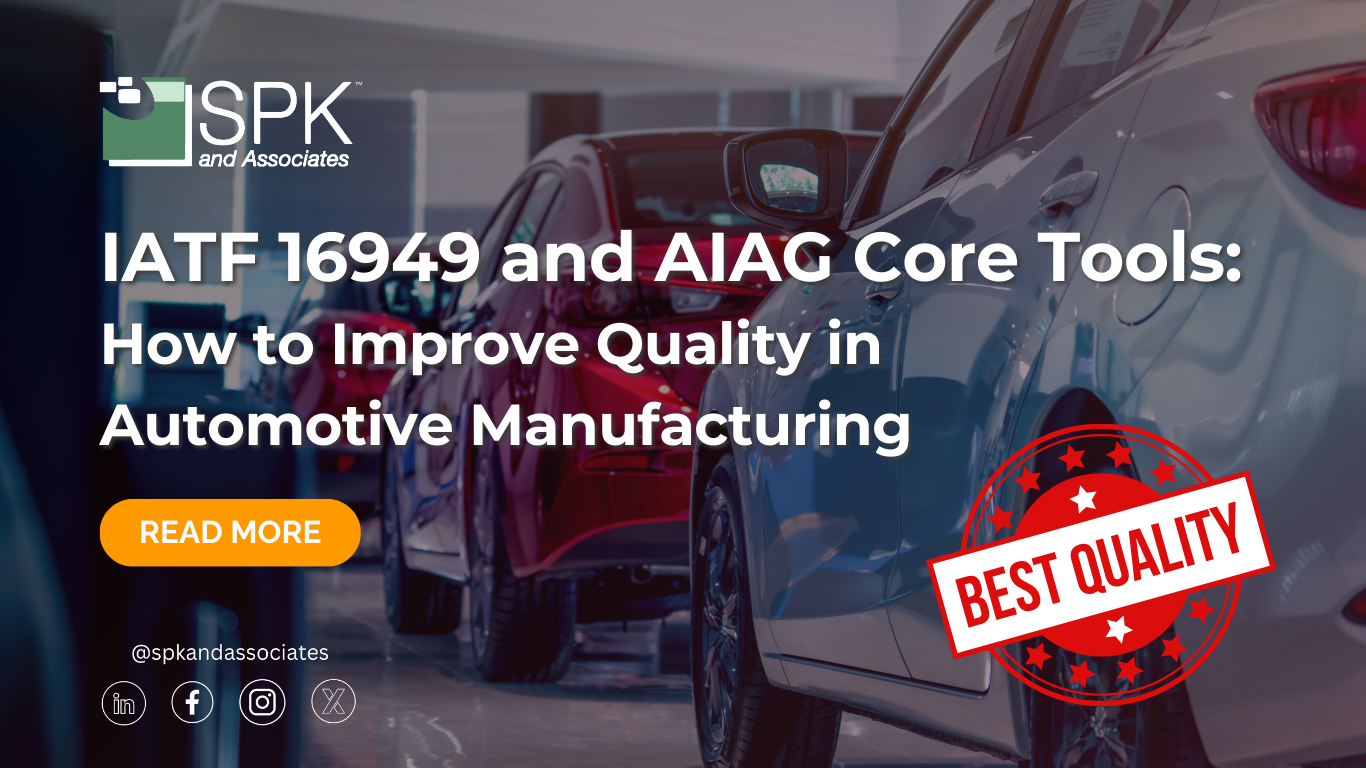Quality is a necessity in every industry, but it is especially vital to automotive designers and manufacturers. This is evident by the strict automotive quality standards manufacturers must meet to achieve customer expectations and ensure safety. Two critical frameworks that guide this effort are IATF 16949 and the AIAG Core Tools. Together, they provide a robust system for improving processes, reducing risks, and achieving continuous improvement in automotive manufacturing. In this blog, we will explore what IATF 16949 is, explain the AIAG Core Tools, and provide guidance on how organizations can comply to remain competitive in the global market.
What is IATF 16949?
In 2016, IATF 16949 replaced ISO/TS 16949 and became the global standard for automotive quality management systems. Developed by the International Automotive Task Force (IATF), it harmonizes various certification systems across the international automotive supply chain. IATF 16949 outlines quality management system (QMS) requirements for organizations in the automotive sector. Its purpose is to ensure high-quality production, prevent defects, and promote continuous improvement. Certification under IATF 16949 is valid for three years and is conducted by recognized third-party auditors. Many OEMs and tier-one suppliers only work with IATF-certified partners, making it a critical credential for businesses in the automotive industry.
What are the AIAG Core Tools?
The Automotive Industry Action Group (AIAG), in collaboration with major automotive manufacturers, developed a suite of five standardized tools to support IATF 16949 compliance. These Core Tools are foundational to building effective QMS processes in the industry:
- APQP (Advanced Product Quality Planning): A structured methodology for planning and validating new products, ensuring requirements are met before launch.
- PPAP (Production Part Approval Process): A formal approval process to confirm that a part meets customer specifications and design intent.
- FMEA (Failure Mode and Effects Analysis): A systematic risk assessment technique to identify potential failures and their impact on products or processes.
- MSA (Measurement Systems Analysis): A statistical approach to evaluating the accuracy, consistency, and reliability of measurement systems.
- SPC (Statistical Process Control): A data-driven method for monitoring and controlling processes to maintain stability and reduce variation.
These tools are designed to work together, creating an interconnected framework that drives consistency, quality, and efficiency across the supply chain.
Importance of IATF 16949 and AIAG Core Tools
The AIAG Core Tools are integral to meeting the requirements of IATF 16949. While IATF 16949 sets the overarching quality standard, the Core Tools provide the practical methods to achieve it. Firstly, mastery of the Core Tools is required for IATF 16949 certification and supplier approval by major automakers. Many automotive OEMs also mandate that suppliers use these tools as part of their contracts. Meeting these requirements also leads to continuous improvement. By focusing on prevention rather than detection, the Core Tools reduce defects, cut waste, and drive innovation. Lastly, these frameworks foster collaboration. Linking design, engineering, manufacturing, and quality teams, they help teams achieve cross-functional integration and ensure customer requirements are met consistently. In short, IATF 16949 defines what to achieve, while the AIAG Core Tools provide the how.
How to Achieve IATF 16949 Compliance
Compliance with IATF 16949 and effective use of the AIAG Core Tools require a structured approach:
1. Implement a Documented QMS: Establish clear processes aligned with IATF 16949 requirements.
2. Train Teams on Core Tools: Ensure cross-functional teams are proficient in APQP, PPAP, FMEA, MSA, and SPC.
3. Engage Third-Party Certification Bodies: Schedule audits with IATF-recognized certification bodies to achieve and maintain certification.
4. Integrate Tools into Daily Operations: Use Core Tools not just during audits but as ongoing practices for product and process development.
5. Focus on Continuous Improvement: Regularly review performance, customer feedback, and process data to drive ongoing enhancements. Having outside firms such as SPK perform these reviews can be valuable to ensure alignment with industry standards.
It is important to keep in mind that certification is not a one-time achievement but an ongoing commitment to quality, safety, and customer satisfaction.
Automotive Success with IATF 16949 and the AIAG Core Tools
In the automotive industry, IATF 16949 and the AIAG Core Tools form the backbone of effective quality management. Together, they ensure manufacturers and suppliers can deliver high-quality products and build trust across the global supply chain. By investing in training, certification, and the daily application of these tools, organizations not only comply with international standards but also gain a competitive edge in one of the world’s most demanding industries. To discover how your team can achieve IATF 16949 certification, contact our experts.










